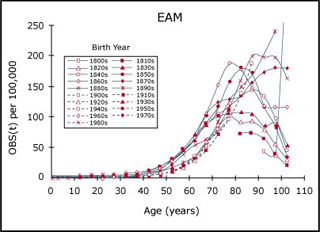Course Description
This course presents a challenging multi-dimensional perspective on the causes of human disease and mortality. The course focuses on analyses of major causes of mortality in the US since 1900: cancer, cardiovascular and cerebrovascular diseases, diabetes, and infectious diseases. Students create analytical models to …
This course presents a challenging multi-dimensional perspective on the causes of human disease and mortality. The course focuses on analyses of major causes of mortality in the US since 1900: cancer, cardiovascular and cerebrovascular diseases, diabetes, and infectious diseases. Students create analytical models to derive estimates for historically variant population risk factors and physiological rate parameters, and conduct analyses of familial data to separately estimate inherited and environmental risks. The course evaluates the basic population genetics of dominant, recessive and non-deleterious inherited risk factors.
Course Info
Instructor
Departments
Learning Resource Types
assignment
Problem Sets

Graph showing United States mortality data from Diabetes mellitus for a range of birth cohorts. (Graph courtesy of Professor Bill Thilly. Used with permission. Generated from MIT’s epidemiology database Web site based on original design by Dr. Pablo Herrero-Jimenez in his MIT Ph.D. thesis, “Determination of the historical changes in primary and secondary risk factors for cancer using U.S. public health records.” (2001).)










